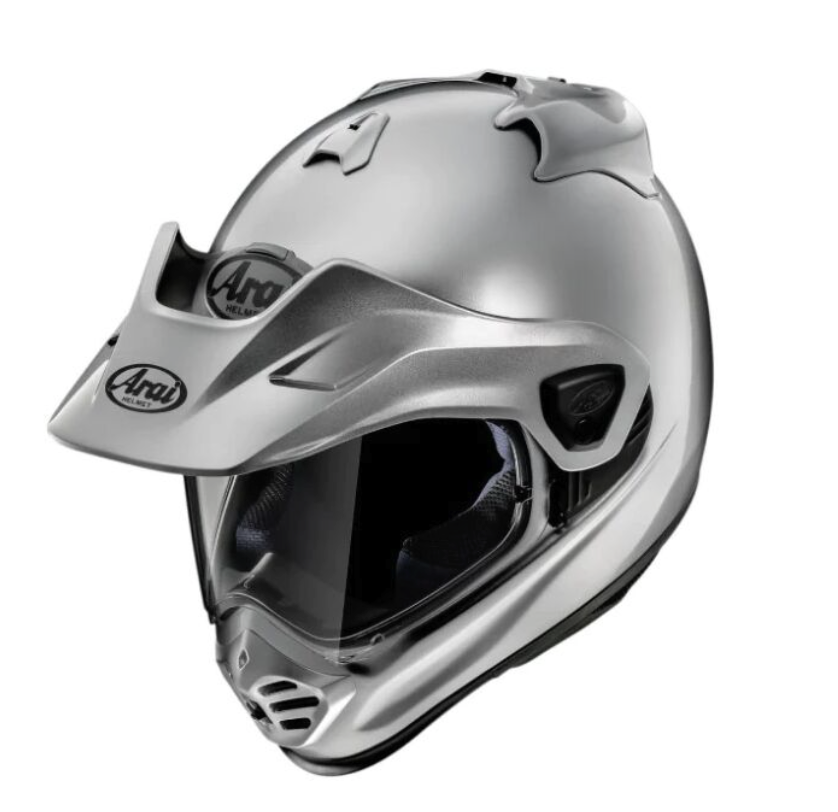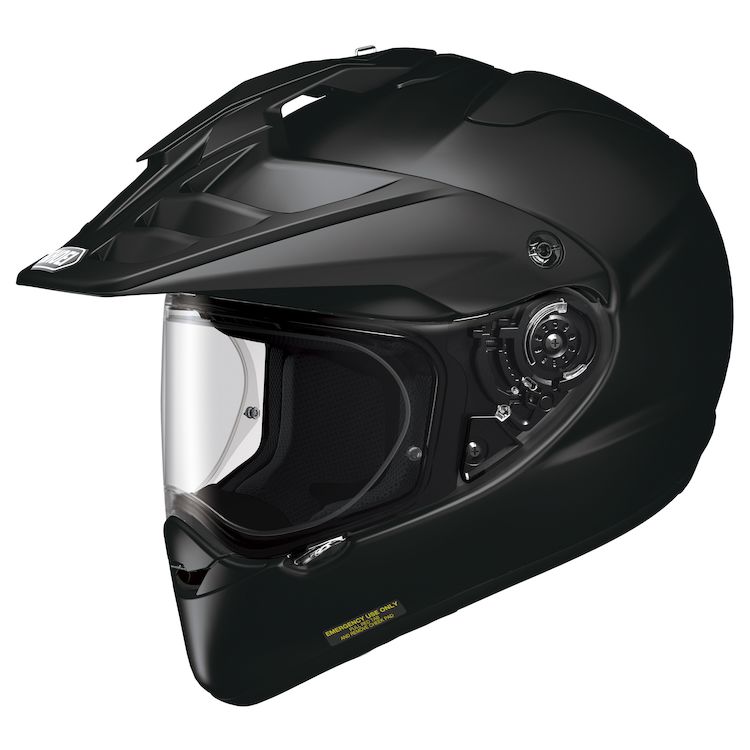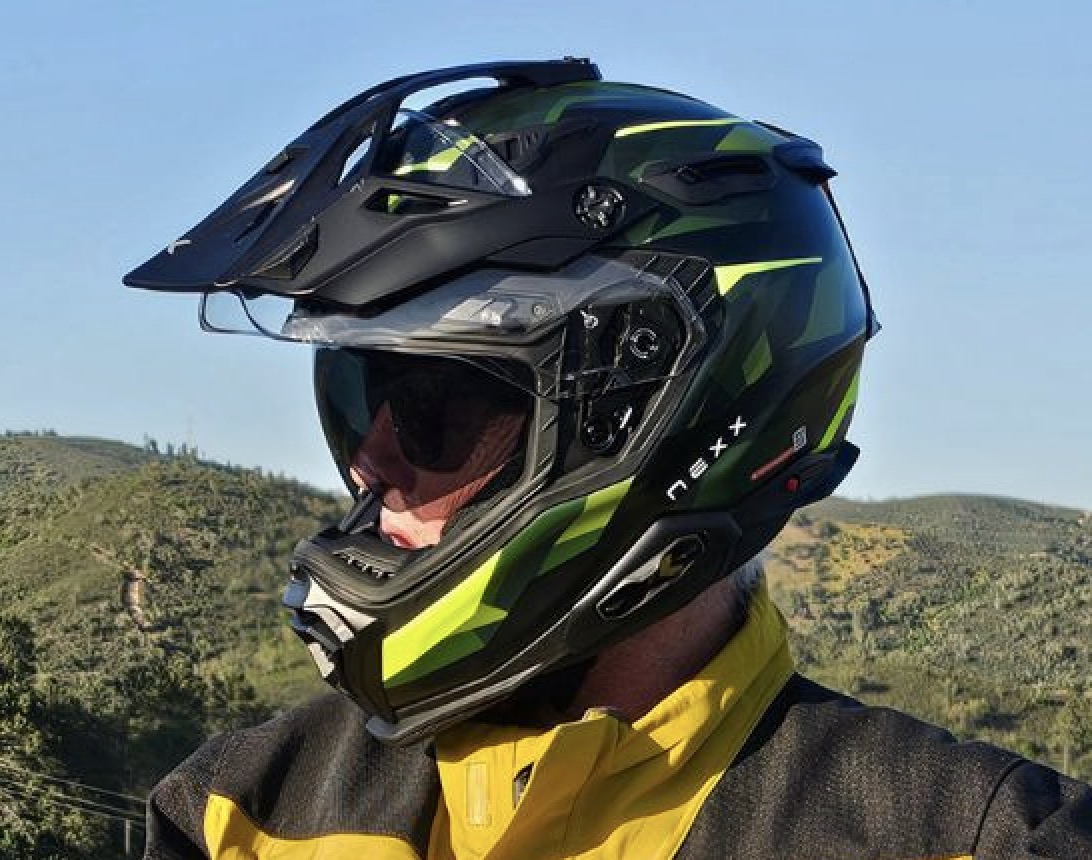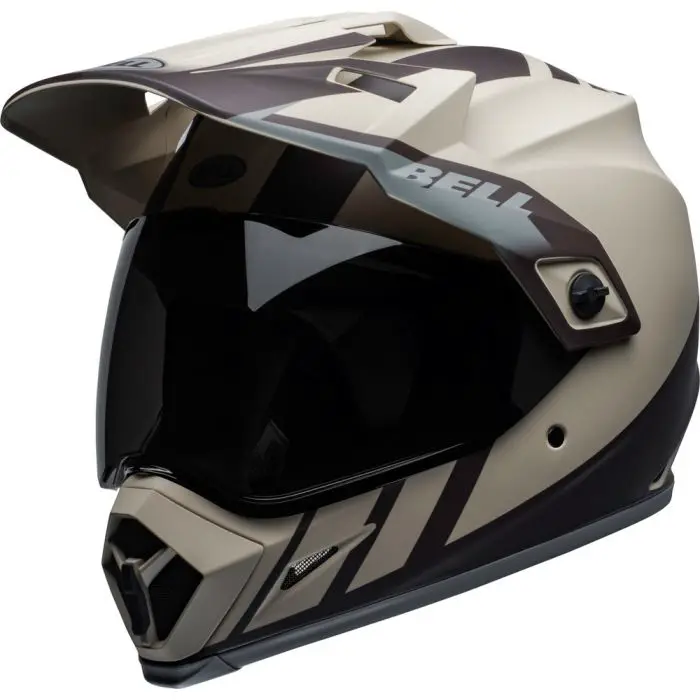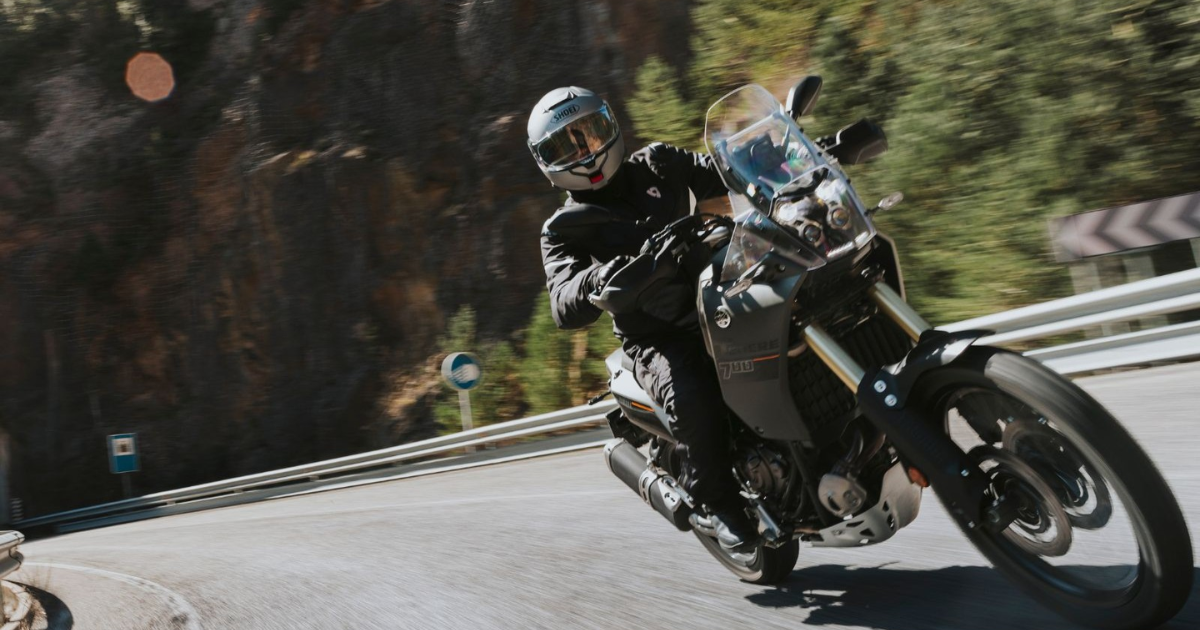
Arai XD-5 vs ScorpionEXO-AT960: Which Helmet Wins for ADV?
left for contents
When it comes to ADV touring helmets, two names keep showing up on riders’ shortlists: the Arai XD-5 and the ScorpionEXO-AT960.
We’ve also featured a detailed Arai XD-5 review on our site, based on The Black Country Rider’s long-term test, which covers its comfort, ventilation, and design updates in depth.
Both aim to balance long-haul comfort with real off-road versatility, but they take very different approaches in design, features, and price. In this guide, we’ll break down how they compare on weight, ventilation, noise, comfort, and value—so you can decide which helmet makes the most sense for your rides.
The Arai XD-5 costs significantly more, but if you prioritize premium comfort, lighter weight, and Snell-rated protection, it’s your go-to. Otherwise the ScorpionEXO-AT960 delivers solid ADV value at half the price.
The sequel to the legendary XD-4 helmet, this lid improves in every way from its round shell design to its versatility and comfort whether you're thrashing trails or cruising on the highway. | A do-everything helmet, it's as comfortable on trails as the highway - though not as solid as premium competitors like the Arai XD-5. One of the rare modular ADV helmets, it's also it's DOT and ECE approved. |
|
|
|
|
The sequel to the legendary XD-4 helmet, this lid improves in every way from its round shell design to its versatility and comfort whether you're thrashing trails or cruising on the highway.
- Quietest ADV helmet
- Removable peak
- Tons of ventilation
- Can use with googles (visor can be removed)
- DOT and Snell approved
- Not a modular like the Scorpion
A do-everything helmet, it's as comfortable on trails as the highway - though not as solid as premium competitors like the Arai XD-5. One of the rare modular ADV helmets, it's also it's DOT and ECE approved.
- Modular chinbar (rare in ADV helmet)
- Removable peak
- Decent airflow
- Drop down sun shade
- DOT and ECE 22‑06 approved
- Susceptible to visor leaks and fogging in heavy rain
- Sun peak vibrates noticeably at highway speeds
Quick Snapshot: Who Each Helmet Is Really For
Who should buy the Arai XD‑5:
- Riders demanding premium protection: the PB‑cLc2 fiberglass shell and multi‑density EPS liner carry Snell M2020, DOT and ECE 22.06 certifications.
- Long‑distance adventurers who prioritize quietness and stability; independent tests praise its wind‑tunnel‑developed aerodynamics and quiet ride, even with the peak attached.
- Those willing to pay more for fit customization and comfort: multiple shell sizes, peel‑away pads and a removable, odor‑resistant liner allow fine tuning, and ventilation is class‑leading.
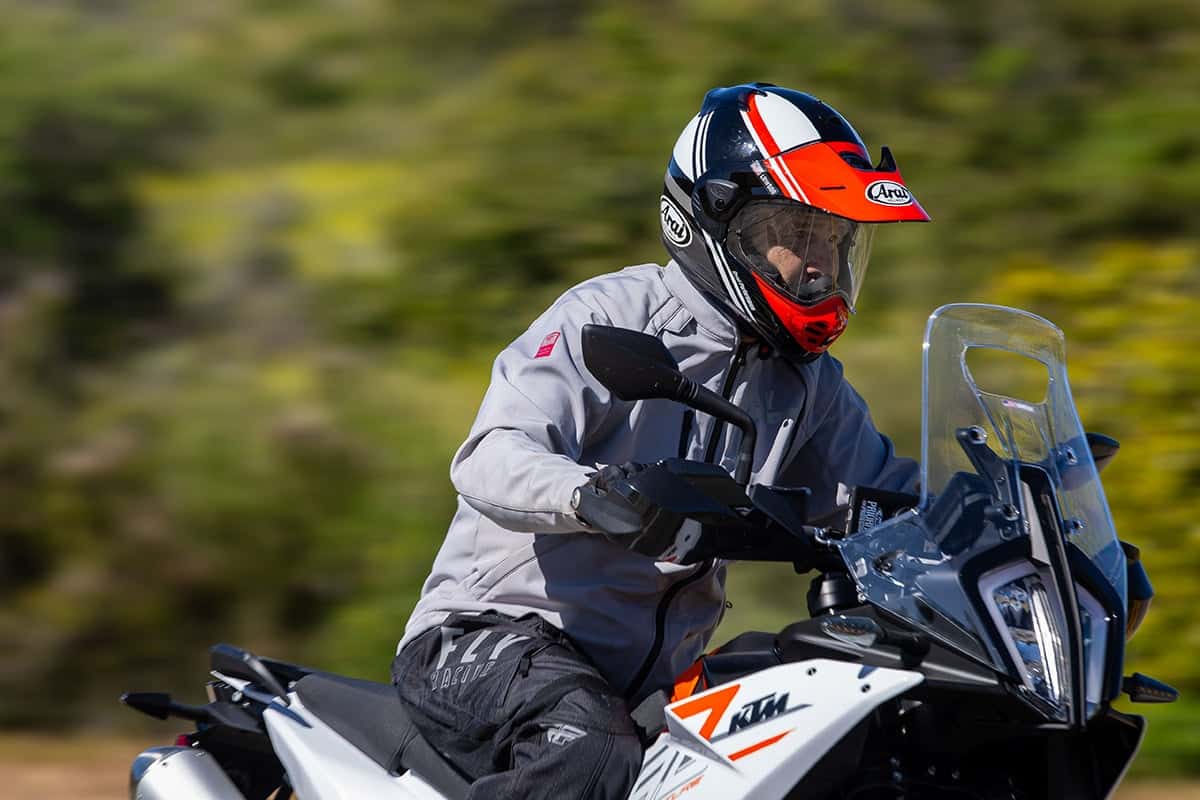
Source
If you want a deep dive on the Arai XD-5, see our review here.
The sequel to the legendary XD-4 helmet, this lid improves in every way from its round shell design to its versatility and comfort whether you're thrashing trails or cruising on the highway.
- Quietest ADV helmet
- Removable peak
- Tons of ventilation
- Can use with googles (visor can be removed)
- DOT and Snell approved (ECE in Europe)
- None - one of the best ADV and touring helmets
Who should buy the ScorpionEXO‑AT960:
- Budget‑conscious ADV riders wanting versatility: a flip‑up chin bar, removable peak and drop‑down sun visor make it one helmet for street, trail or touring use at ~US$280–310.
- Riders who value convenience features like an integrated Speedview sun shield, KwikWick moisture‑wicking liner and EXO‑COM speaker pockets.
- Those who prioritize ventilation and a wide eye‑port; independent reviews note above‑average airflow and excellent peripheral vision.
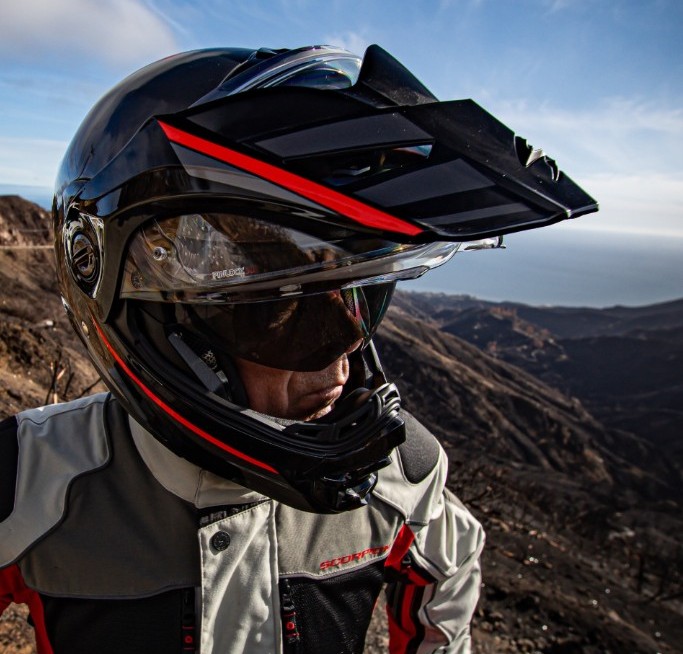
Source
Paying roughly $500 more for the Arai buys a lighter shell, quieter ride, premium safety certifications and bespoke fit options. If budget and modular convenience are paramount, the Scorpion offers excellent value. If ultimate comfort, quietness and build quality matter more, the Arai justifies the premium.
A do-everything helmet, it's as comfortable on trails as the highway - though not as solid as premium competitors like the Arai XD-5. One of the rare modular ADV helmets, it's also it's DOT and ECE approved.
- Modular chinbar (rare in ADV helmet)
- Removable peak
- Decent airflow
- Drop down sun shade
- DOT and ECE 22‑06 approved
- Susceptible to visor leaks and fogging in heavy rain
- Sun peak vibrates noticeably at highway speeds
Numbers That Matter: Weight, Safety, and Cost Side-by-Side
| Specs | Arai XD‑5 | ScorpionEXO‑AT960 |
|---|---|---|
| Weight | ~1.73–1.81 kg (3.8–4 lb) depending on size; measured 1814 g/3.99 lb with comms installed. | ~1.86–1.88 kg (4.09–4.16 lb); medium size listed at 1858 g/4.09 lb. |
| Fit/Shape | Intermediate oval interior; adjustable peel‑away pads and three shell sizes for precise fit. | Intermediate oval head shape with KwikFit cheek pads accommodating glasses. |
| Shell/Materials | PB‑cLc2 complex laminate shell with Super‑Fiber belt; one‑piece multi‑density EPS liner. | Advanced LG polycarbonate shell with multi‑layer EPS and strategically placed channels. |
| Safety/Cert | Snell M2020, DOT FMVSS 218 (with ECE 22.06 variant in EU) | DOT FMVSS 218 and ECE 22.06 certifications. |
| Ventilation/Weatherproofing | Redesigned Quantic‑style top vent, permanent forehead vent and improved chin vent; adjustable inner shutters; removable peak reduces buffeting; large Max Vision shield with Pinlock included. | Aero‑tuned ventilation with large top intake and exhaust vents; dual‑position mouth vent (defrost or direct airflow); EverClear anti‑fog shield with retractable Speedview sun visor; visor seal can leak in heavy rain. |
| Electronics/Battery | No electronics; communications ready via flat mounting surfaces and deeper speaker pockets. | EXO‑COM ready with 50 mm speaker pockets; drop‑down sun visor is operated via sliding mechanism. |
| Warranty | 5 years from purchase (typical Arai). | 5 years (ScorpionEXO warranty). |
| Street Price (typical) | Solids ~US$840–$860; graphics US$950; discounts rare. | Typically US$280–$310 for solids (Topographic graphics around US$300); price varies by color. |
If you’re weighing these against the broader field, our best adventure helmets roundup shows how the XD-5 and AT960 stack up against other leading ADV lids.
XD-5 vs. AT960: The Right Match for Your Journey
Choose Arai XD‑5 if…
- You ride long ADV tours and value comfort over cost. The XD‑5’s refined aerodynamics and R75 shell shape reduce buffeting and neck fatigue on highway stretches. It stays quiet at speed and feels stable even in cross‑winds.
- Safety is paramount. The PB‑cLc2 shell and multi‑density EPS deliver top‑tier impact performance with Snell M2020, DOT and ECE 22.06 certifications.
- You need customizable fit. Adjustable cheek and temple pads, three shell sizes and intermediate‑oval shaping allow a tailored fit, vital for all‑day comfort.
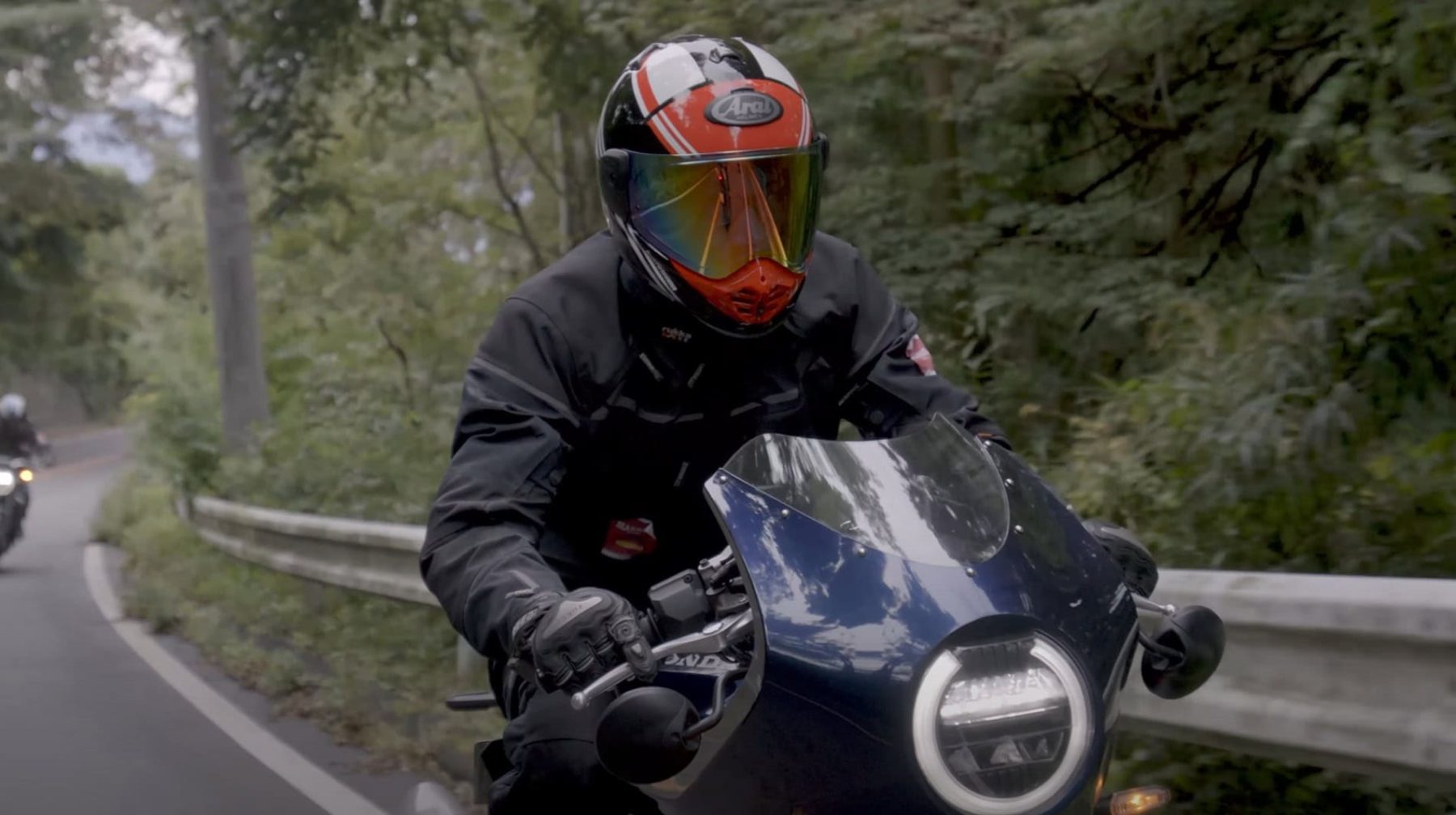
Source
- Ventilation and vision matter. A permanent forehead vent, improved chin vent with internal shutter and a Pinlock‑ready VAS‑A Max Vision shield keep you cool and fog‑free in varying climates.
- You prefer goggles and multiple riding modes. The XD‑5 can be configured with shield and peak, peak only (for goggles) or shield only, making it versatile for street, dual‑sport or off‑road use.
- You want a helmet that will last. Arai’s hand‑built construction, premium materials and five‑year warranty make it a long‑term investment.
Choose ScorpionEXO‑AT960 if…
- You’re on a budget but still need dual‑sport functionality. With a typical street price around US$280–310, the AT960 costs less than half of the Arai yet delivers modular versatility.
- Modular convenience is a priority. Flip up the chin bar to talk, hydrate or take photos without removing the helmet; remove the peak for highway rides or the shield to run goggles.
- You want built‑in sun protection. The Speedview retractable sun visor slides down instantly—no need for tinted shields or sunglasses.
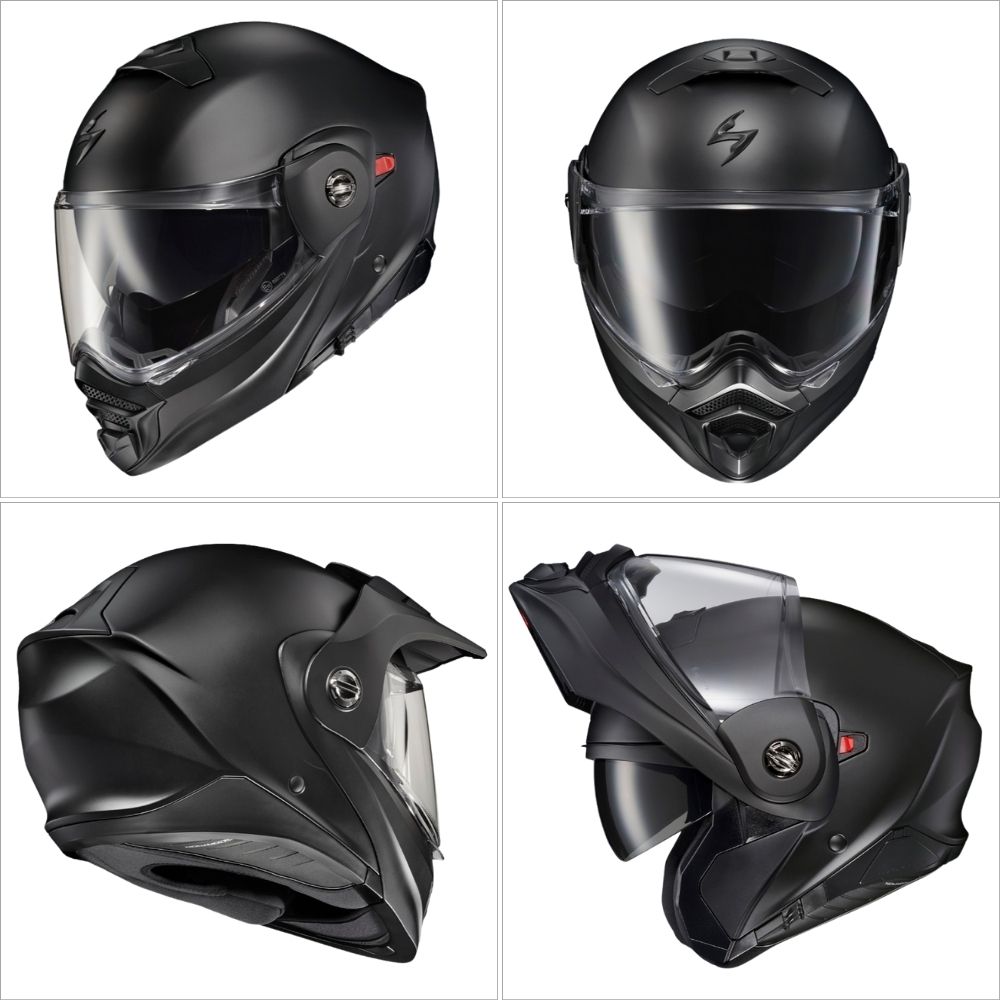
Source
- You need good ventilation at this price point. Independent tests highlight above‑average airflow from the large top intake, exhaust vents and dual‑position mouth vent, keeping you cooler on summer trails.
- Wide eye‑port matters for off‑road vision. The 11 cm tall eye‑port accommodates most goggles and gives an expansive field of view.
- You accept some trade‑offs. The AT960 weighs about 4.1 lb, and riders report vibrating peaks, visor leaks and more wind noise than premium helmets. Ear plugs and regular liner washing help.
Budget-conscious riders might also want to check our best budget helmets guide, where the AT960 regularly makes the cut.
From the Saddle: Hands-On Feedback and Long-Haul Impressions
Arai XD‑5
- Owners and reviewers consistently praise the XD-5’s build quality and comfort.
- Cycle News testers called it “the helmet we always grab for ADV and street tests”, highlighting improved ventilation, a quieter ride, and excellent field of view.
- Riders appreciate the Pinlock-ready Max Vision shield for its clarity and fog resistance.
- The intermediate-oval fit and adjustable pads make it easy to dial in comfort, though many note it feels snug at first and may need a break-in period.
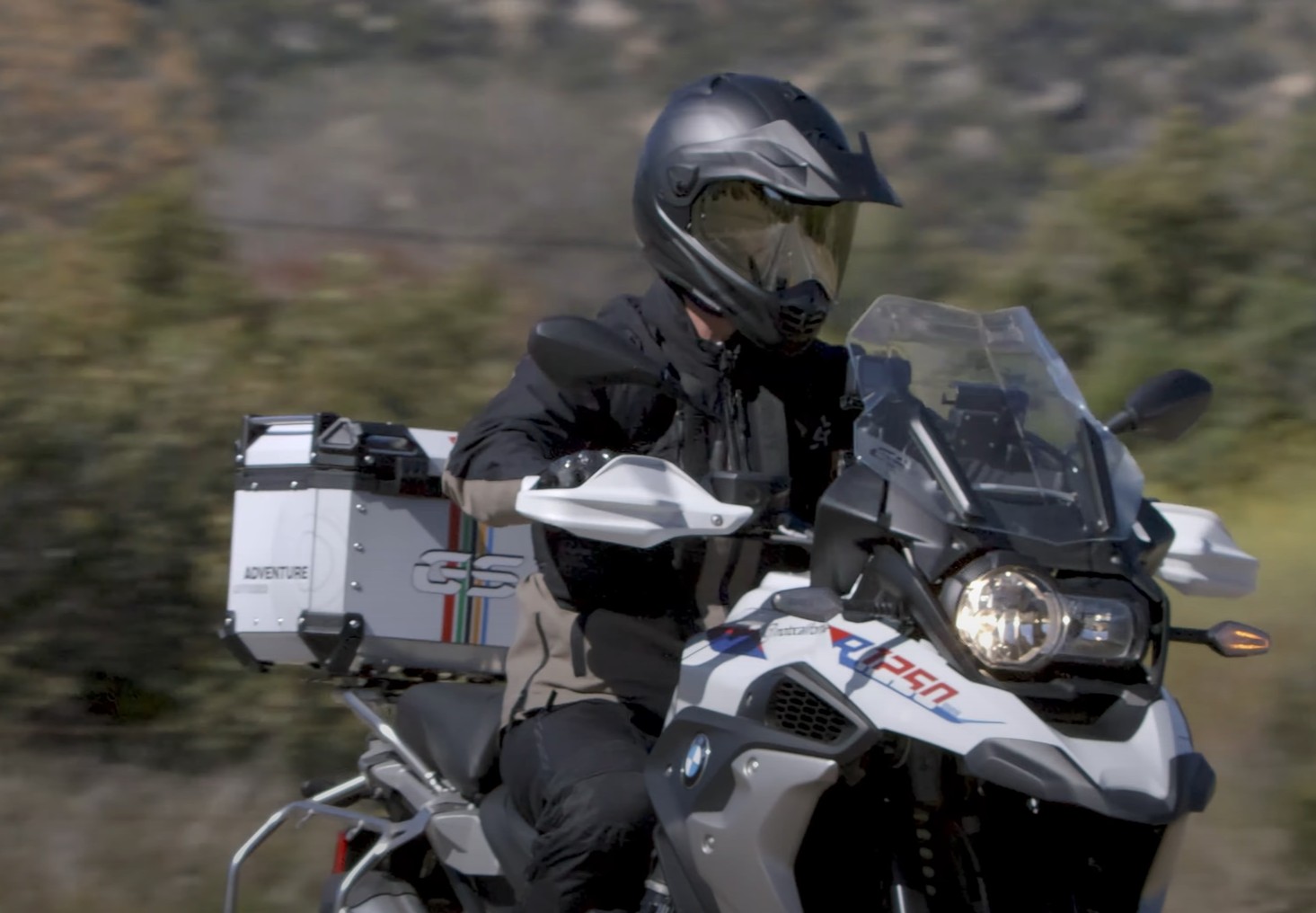
Source
- At around 3.8–4 lb, some riders consider the weight a downside compared to lighter off-road lids, but most agree it’s well balanced and not fatiguing on long rides.
- A few owners miss the visor vents from the previous XD-4, but they note the new venting system is quieter and less prone to leaks.
ScorpionEXO‑AT960
- Reviews and owner feedback highlight the AT960 as a strong value helmet with some compromises.
- WebBikeWorld praised it as “one of the few modular adventure helmets on the market”, noting its affordability, ventilation, and large eye-port.
- Riders like the wide field of view, the drop-down sun visor, and the flip-up chin bar for convenience.
- Downsides include an external peak that vibrates in turbulent wind and an anti-fog coating that’s less effective than a Pinlock insert.
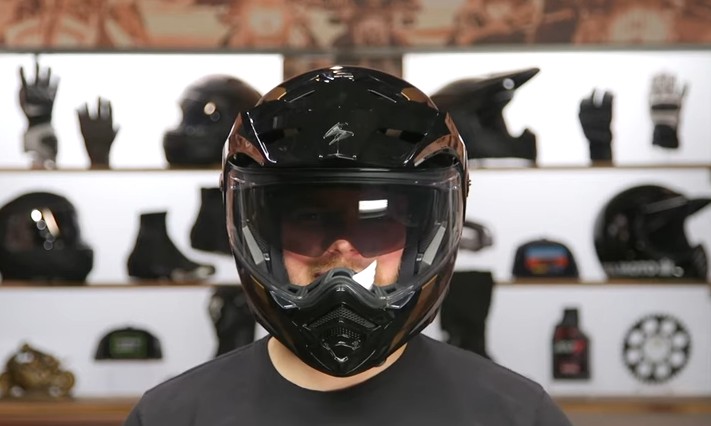
Source
- The helmet is on the heavier side, at around 4.16 lb.
- Some users report visor seal leaks in rain and that the chin-bar latches and sun-visor slider can stick in dusty conditions.
- Liner fabrics are comfortable but absorb sweat quickly, requiring frequent washing.
- Despite these drawbacks, most owners feel the AT960 offers impressive versatility and comfort for the price.
Battle Tested: How They Compare on the Road
Weight & Fatigue
The Arai XD‑5 tips the scales around 1.73–1.81 kg (3.8–4 lb) depending on size and accessories. While not featherweight, the PB‑cLc2 shell distributes mass evenly, and riders find it balances well at speed. Adjustable fit pads also allow you to snug the helmet without pressure points, reducing fatigue on long rides.
The ScorpionEXO‑AT960 is heavier at roughly 1.86–1.88 kg (4.09–4.16 lb). The modular hinge and polycarbonate shell add weight, and owners report more neck fatigue during multi‑hour highway stints. If your ADV touring involves back‑to‑back long days, the extra half‑pound could be noticeable.
Noise & Aerodynamics
Arai invested heavily in wind‑tunnel testing for the XD‑5. The redesigned peak sits lower and has a rounded leading edge to reduce buffeting, and an AR spoiler helps smooth airflow around the helmet. Riders report that the helmet is among the quietest in the ADV segment, even with the peak attached; using ear plugs makes it whisper‑quiet on highways.
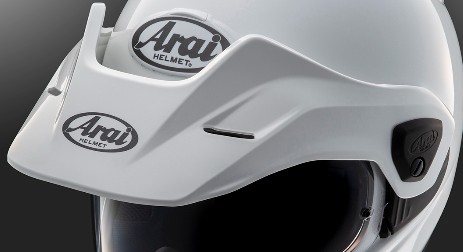
Source
Scorpion’s aero‑tuned shell offers decent stability for a budget helmet, but the peak generates more vibration and wind noise at speed. Removing the peak for highway sections helps, but the modular hinge also adds wind turbulence. Wearing ear plugs is recommended. The external sun‑visor slider sits on the left side and can catch wind; some owners complain that it interferes with communicator mounts.
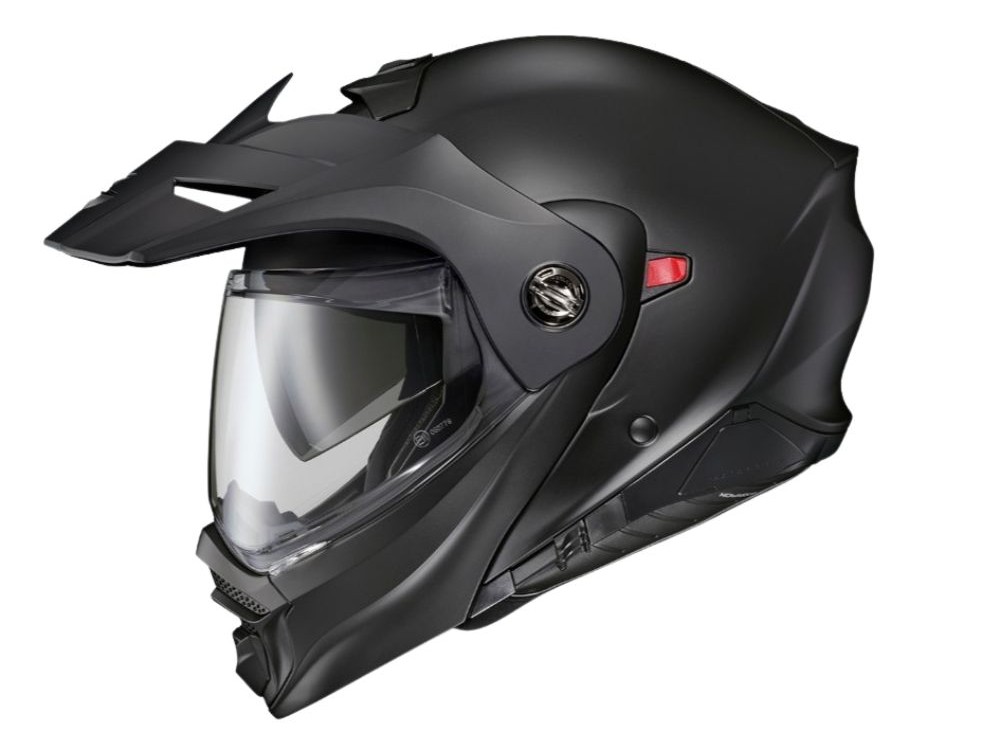
Source
Ventilation & Weather Protection
The XD‑5’s ventilation is a standout. An innovative Quantic‑style top vent and permanent forehead vent feed fresh air into internal channels, while a redesigned chin vent with an inner shutter allows you to direct air to the face or visor. Riders find the system effective in both hot and cool conditions, and the included Pinlock insert prevents fogging. Weather protection is excellent; the shield seal is tight, and leaks are rare.
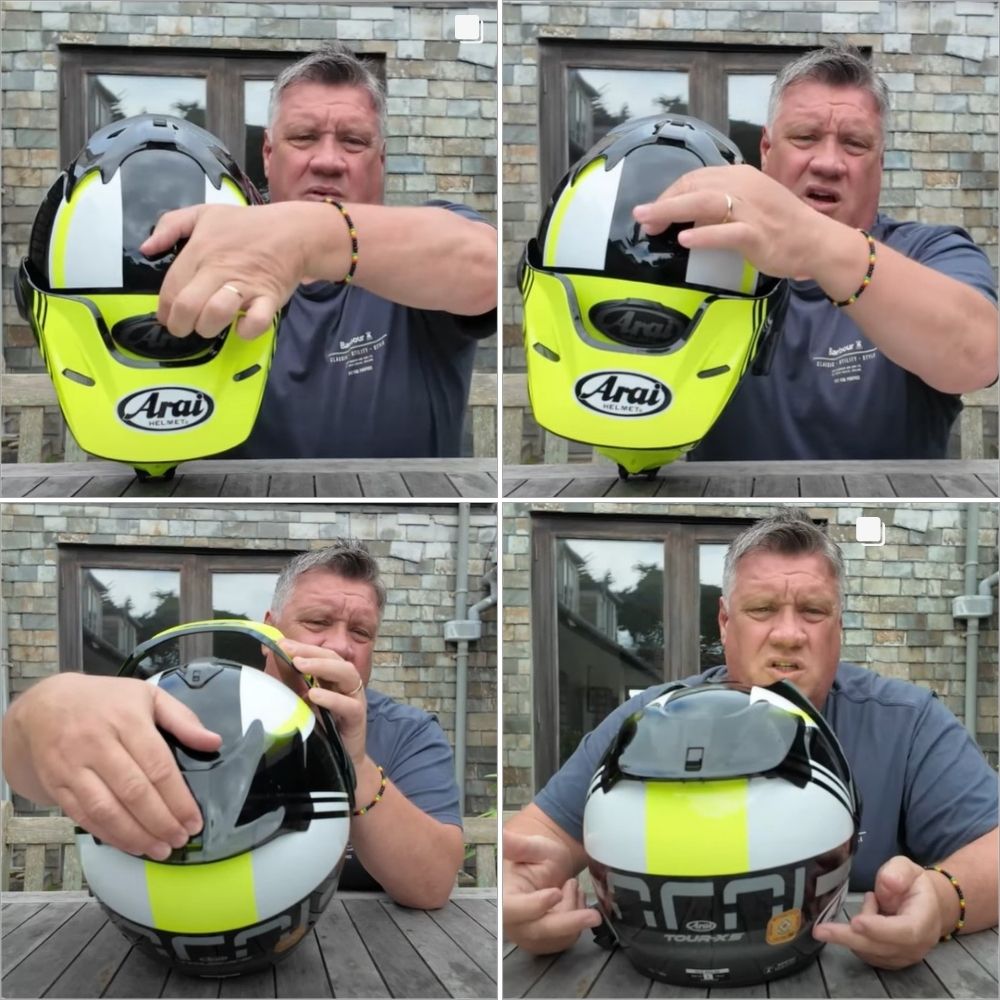
Source
The AT960 features a large top intake and exhaust ports plus a dual‑position mouth vent that can act as a defroster or direct airflow onto your face. Ventilation is widely regarded as above average for the price, keeping riders comfortable on hot rides. However, the EverClear anti‑fog coating doesn’t match Pinlock performance, and the visor seal can leak during heavy rain. Removing the peak improves airflow but exposes you to more sun.
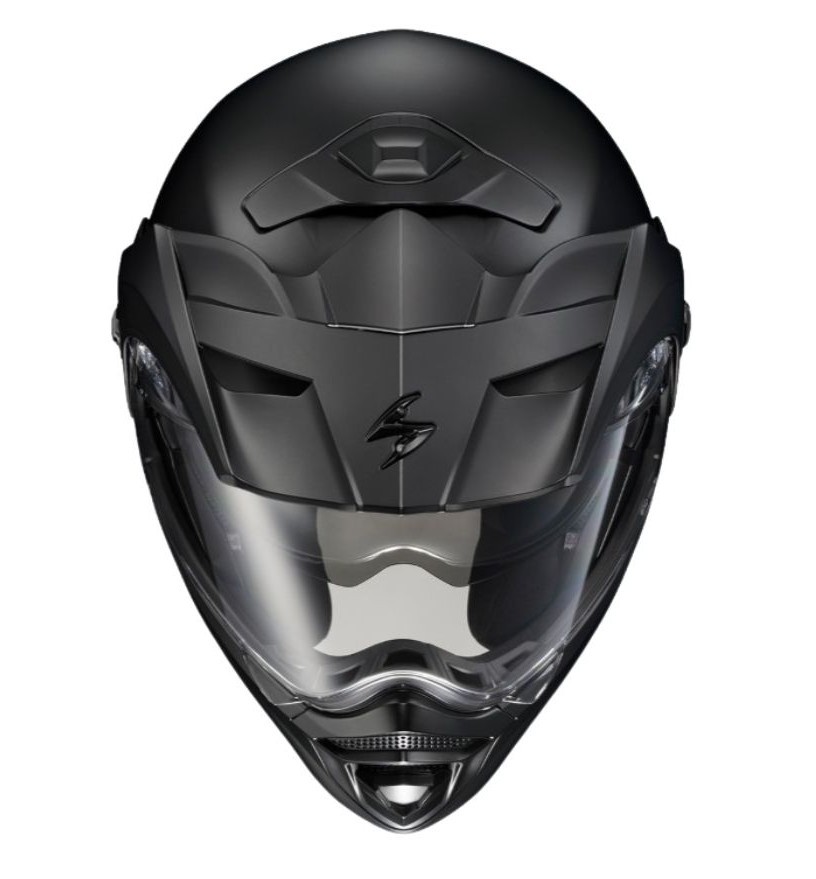
Source
Visor & Field of View
Arai’s VAS‑A Max Vision shield provides a wide field of view with minimal distortion and includes a Pinlock XLT 120 insert for fog‑free performance. The shield uses a tool‑less removal system, and the helmet ships with blank covers when running the peak without the shield. There is no internal sun visor; Arai prioritizes shell integrity and expects riders to use sunglasses or swap visors.
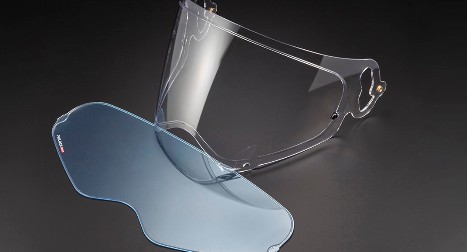
Source
Scorpion equips the AT960 with a large EverClear shield with anti‑fog coating and a Speedview drop‑down sun visor, giving riders instant relief from glare. The eye‑port is 11 cm tall and goggle‑compatible, offering excellent peripheral vision. However, the shield seal is less robust, and some users report distortion at the top edge when the shield is partially open.
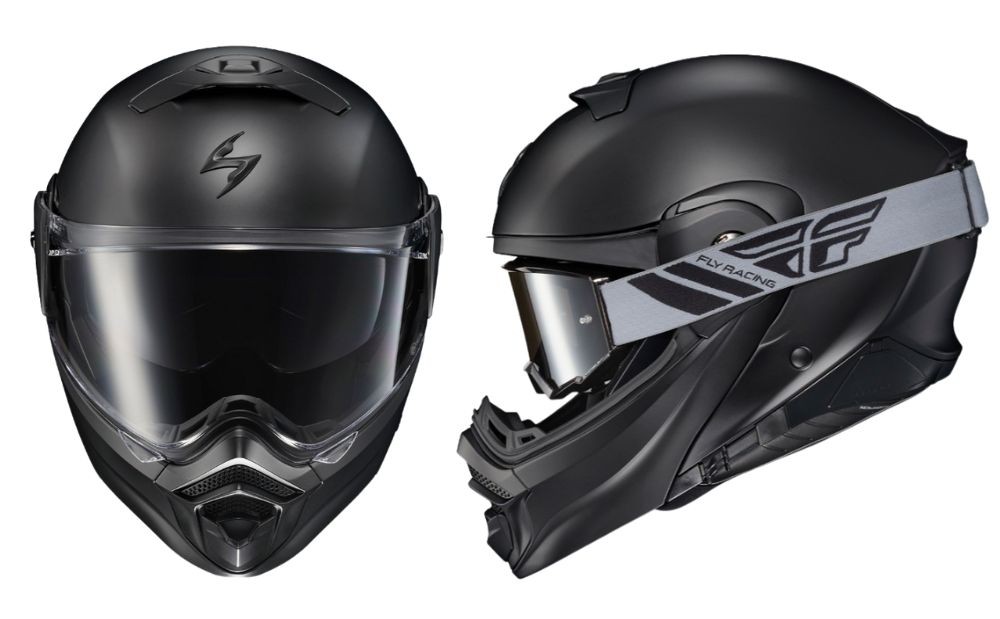
Source
Modularity & Features
The XD‑5 isn’t modular—it’s a traditional full‑face ADV helmet with removable peak and optional shield. Arai focuses on safety and keeps moving parts to a minimum. The helmet is communication‑system ready thanks to flat mounting areas and deep speaker pockets, but there’s no drop‑down sun visor.
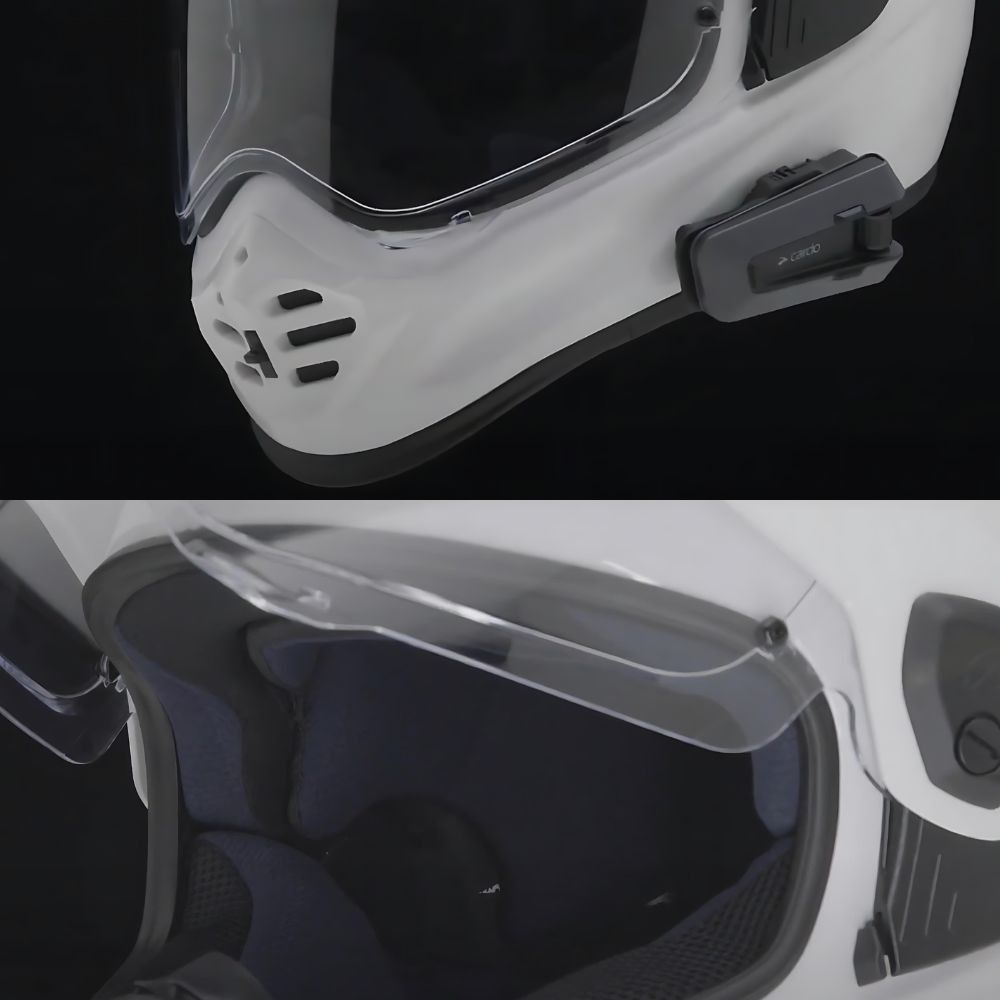
Source
The EXO‑AT960’s defining feature is its modular chin bar, allowing riders to flip up the entire front section when stopped or riding slowly. Combined with the removable peak and drop‑down sun visor, it’s one of the most versatile ADV helmets available. The helmet is ready for the EXO‑COM Bluetooth system and has generous speaker pockets. The trade‑off is extra weight and mechanical complexity.
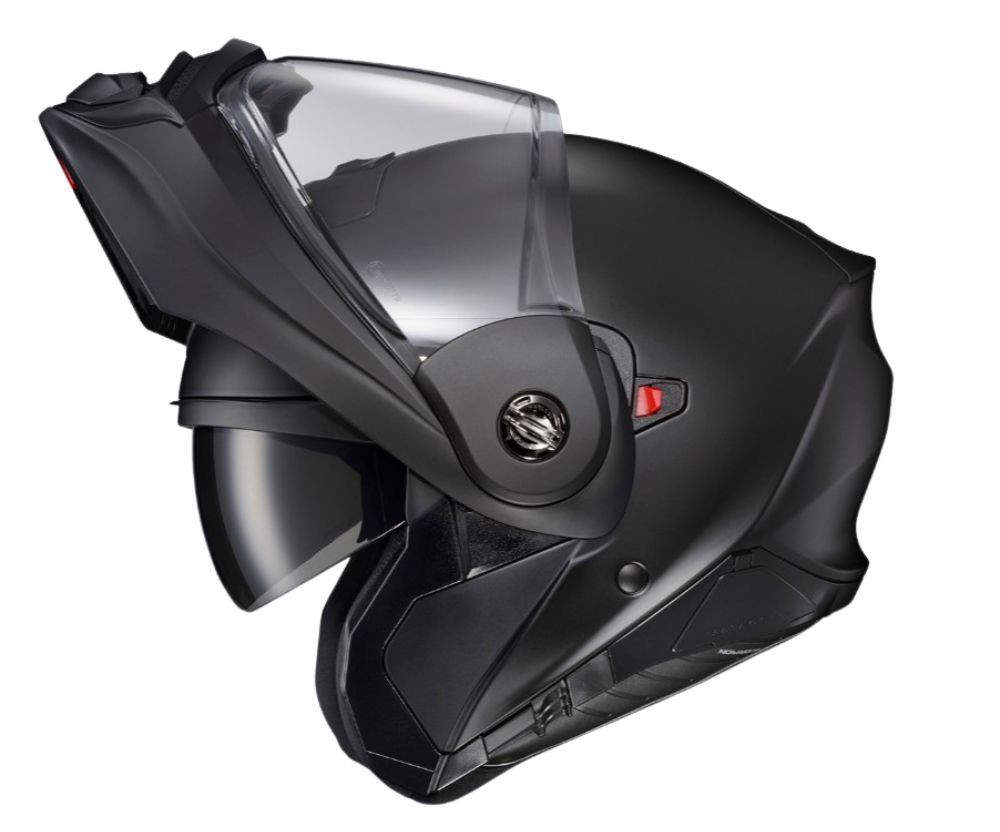
Source
For a broader look at helmets designed with comms integration in mind, see our adventure helmets with Bluetooth guide.
Build & Finish
Arai helmets are hand‑built in Japan. The XD‑5’s PB‑cLc2 shell and meticulously finished paint and graphics justify its premium price. Reviews note high‑quality seals, plush padding and durable components.
Scorpion’s build quality is impressive for the price; the AT960 uses a durable polycarbonate shell, solid paint and a comfortable KwikWick liner. However, small details—like the sun‑visor slider, peak screws and visor seal—feel less refined than the Arai, and long‑term durability remains to be proven.
What That Extra $600 (or Savings) Really Buys You
The street‑price gap between these helmets is roughly US$600. The Arai XD‑5 sits firmly in the premium tier (~US$840–960), while the ScorpionEXO‑AT960 occupies the budget‑mid range (~US$280–310). What does the extra money buy?
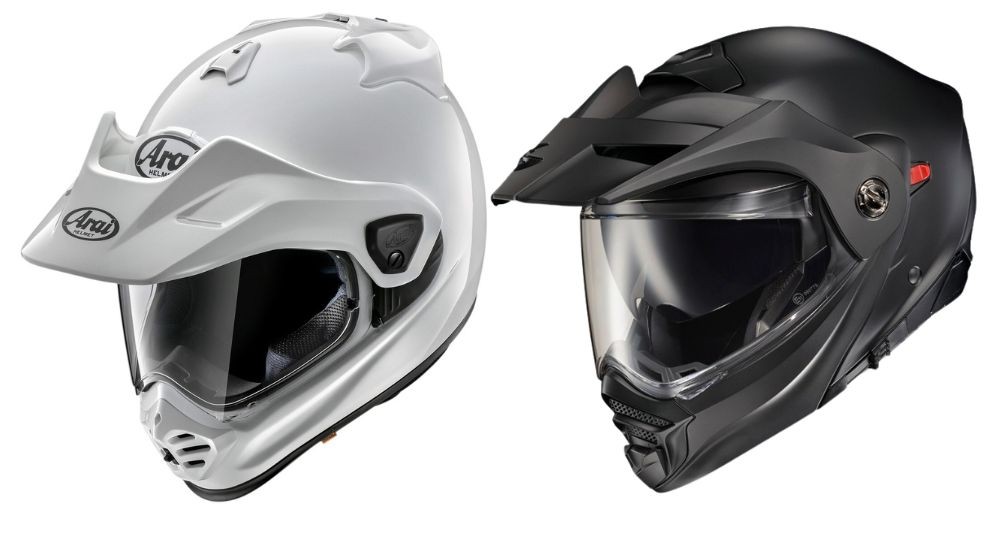
- Safety and materials: The Arai’s PB‑cLc2 shell, multi‑density EPS and Snell certification offer higher impact performance and a more robust shell than the AT960’s polycarbonate construction. If you ride aggressive off‑road or value top‑tier protection, the Arai’s materials justify the cost.
- Noise and comfort: The XD‑5’s aerodynamic peak, AR spoiler and refined interior result in a quieter, more stable ride at speed. For riders tackling long highway miles between trails, reduced noise and fatigue can be worth the premium.
- Longevity: Hand‑built construction, premium paint and five‑year warranty mean the Arai should last many seasons. The Scorpion’s components are good for the price, but small parts (visor slider, peak screws) may wear sooner.
- Convenience features: The Scorpion offers more day‑to‑day convenience—flip‑up chin bar, drop‑down sun visor and modular design—making it ideal for commuting or mixed riding. The Arai lacks these features but focuses on core riding quality.
For many ADV touring riders, the Arai will be worth the upgrade if budget allows and you prioritize safety, quietness and long‑term durability. However, the Scorpion remains one of the most capable and affordable modular ADV helmets; for occasional tours or riders who appreciate flip‑up convenience, its value proposition is strong.
Other Helmets Worth a Look if You’re Still Deciding
Shoei Hornet X2: Premium composite‑shell ADV helmet with Snell and DOT certification, excellent ventilation and stable aerodynamics. Lighter than the Arai and includes an integrated peak and large shield. Ideal for riders seeking premium performance without a modular chin bar.
Shoei Hornet X2 Adventure Helmet delivers the perfect blend of on-road comfort and off-road capability for serious adventure riders.
- Lightweight AIM+ shell for superior protection and aerodynamics
- Advanced ventilation system for optimal airflow in all conditions
- Emergency Quick-Release System for enhanced rider safety
- Runs small, sizing up is recommended
Nexx X.WED3: Mid‑priced adventure helmet with a carbon/fiberglass X‑Matrix shell, internal sun visor and removable peak. Offers comparable ventilation to the Arai at a lower weight, though fit runs narrow and quality is mid‑range.
A premium helmet at midrange price: advanced composite or full carbon fiber shell, flexible ventilation system, integrated comms, and versatile street + off-road design that doesn't require tools to switch. Long term review here.
- Big eyeport
- Lightweight
- Anti-vibration system
- So popular it's often out of stock
Bell MX‑9 Adventure MIPS: Budget‑friendly ADV helmet with polycarbonate shell, integrated MIPS rotational‑impact liner and good ventilation. Lighter than the Scorpion and includes a removable peak and large eye‑port; best for riders prioritizing value and safety technology.
A helmet that delivers far more than its price suggests, it's a great starter ADV lid that covers all the bases.
- MIPS liner reduces rotational force in crash
- Large visor for great visibility
- Removable peak for comfortable highway miles
Riders Ask, We Answer: Common Buying Questions
Is the Arai XD‑5 quieter than the ScorpionEXO‑AT960?
Yes. Independent tests and rider feedback highlight the XD‑5’s quiet aerodynamics, even with its peak attached. The AT960’s peak vibrates and its modular hinge adds wind noise.
Are both helmets certified for street use in the US and Europe?
Both helmets meet DOT FMVSS 218 and ECE 22.06 standards.
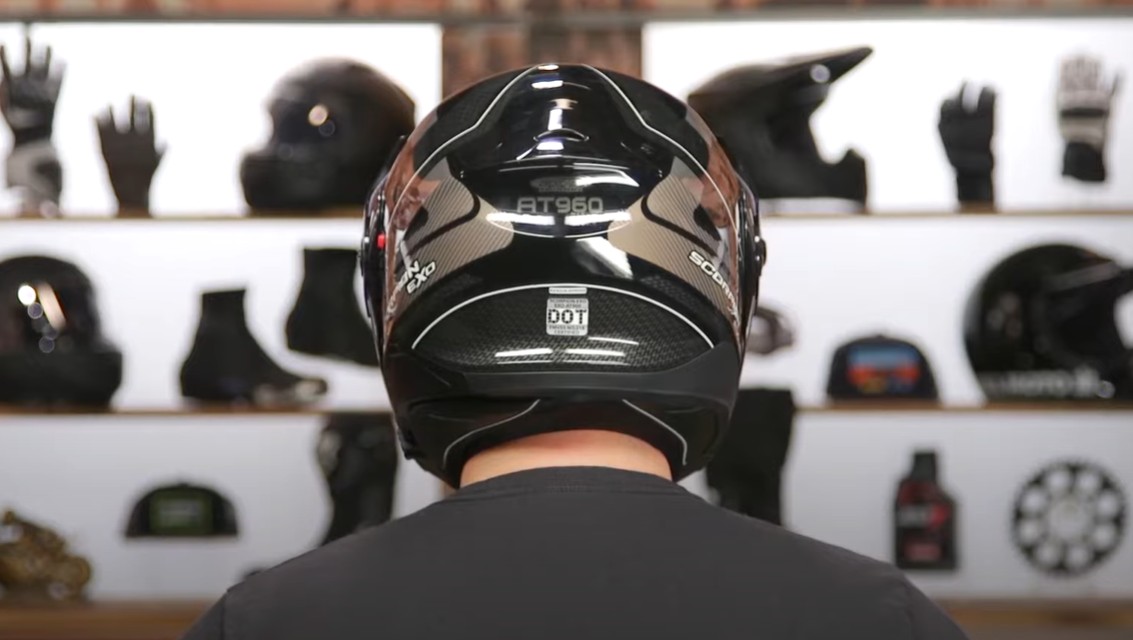
Source
The Arai additionally carries a Snell M2020 rating, indicating higher impact‑energy management.
Which helmet has better ventilation?
The Arai’s Quantic‑style top vent, forehead vent and chin vent with internal shutter provide superior airflow and adjustability. The Scorpion’s large vents offer good airflow for the price but lack the precision and weather sealing of the Arai system.
Does the Arai XD‑5 have a drop‑down sun visor?
No. Arai prioritizes shell integrity and does not include an internal sun visor. Riders must use sunglasses or swap to a tinted shield.
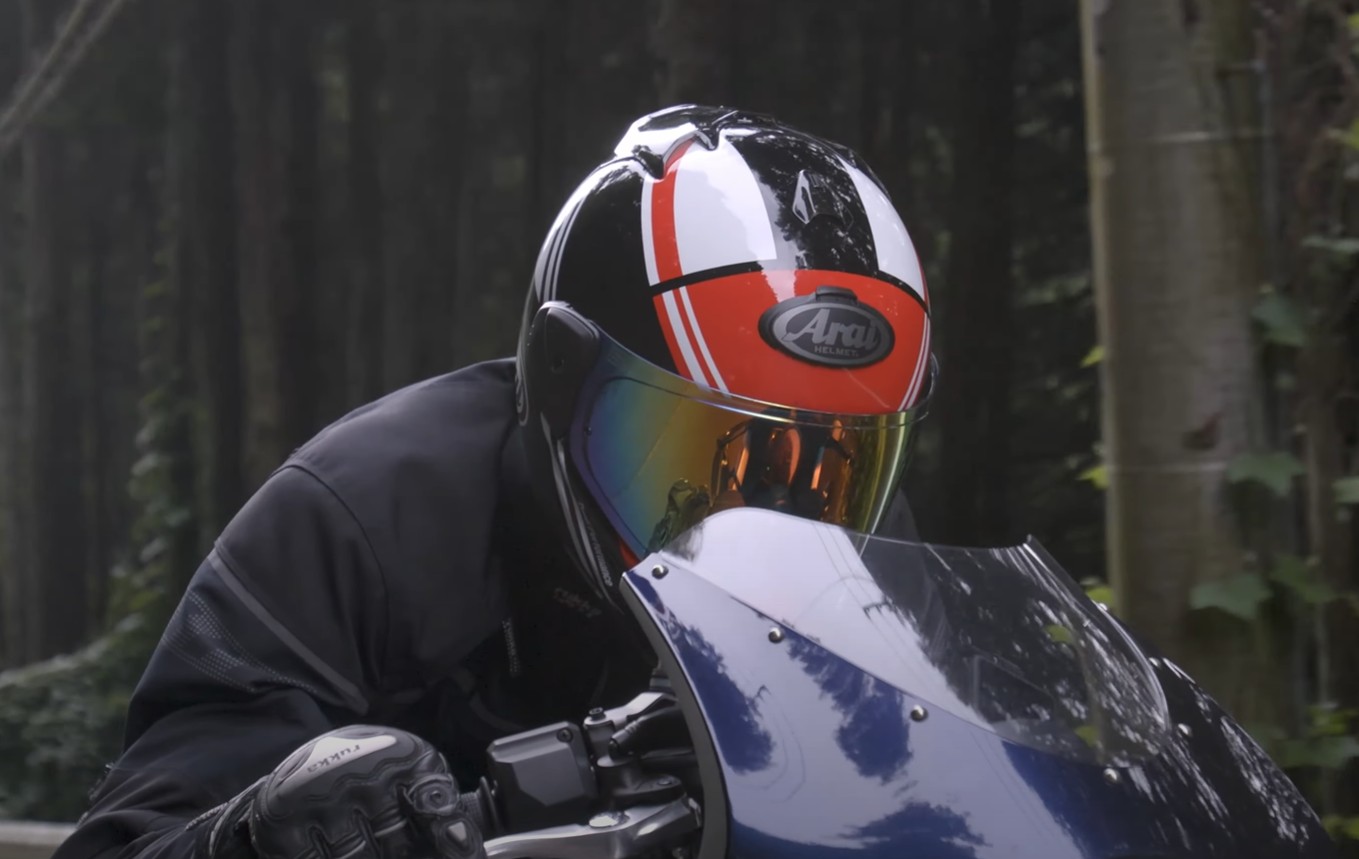
Source
On the other hand, the Scorpion includes a Speedview sun visor for on‑the‑fly shade.
How do the helmets handle communications systems?
The XD‑5 features flat mounting areas and deep speaker pockets; installing a Cardo or Sena unit is straightforward. The AT960 is EXO‑COM ready and has dedicated speaker pockets, though the sun‑visor slider may interfere with some communicators.
Can I remove the peak and visor on these helmets?
Yes. The Arai allows you to run peak + shield, peak + goggles or shield only.

Source
The Scorpion’s peak is removable, and you can remove the shield to use goggles or run the helmet in a street‑only configuration.
Related

Carbon Fiber Modular Helmets: Ultimate Flip-Up Lids
Discover carbon fiber modular helmets that deliver flip-up convenience, lightweight strength, and serious protection for every ride.

